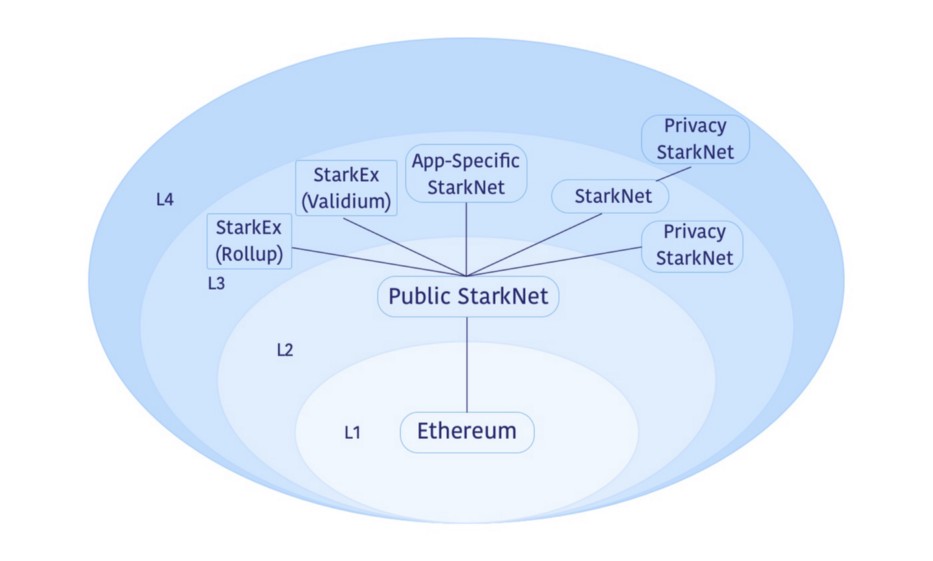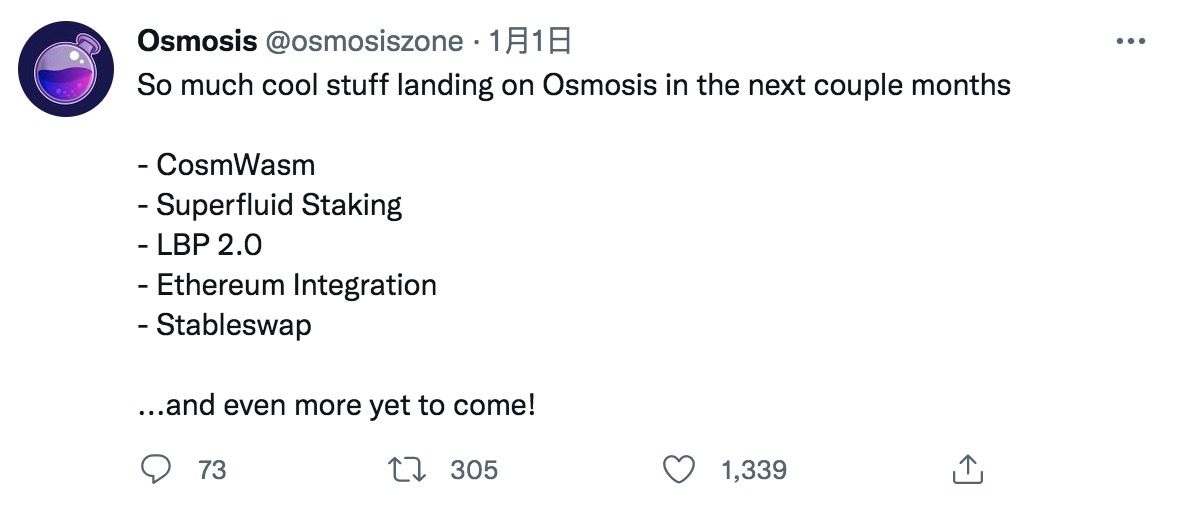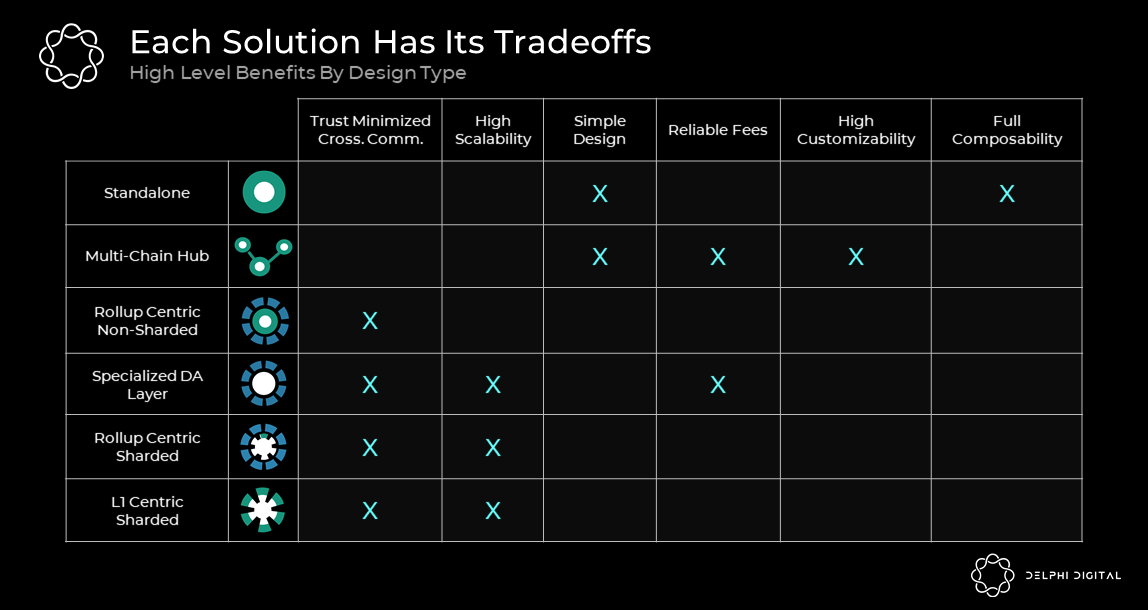Composability vs Modularity, who is the C position of blockchain?
Recently, research reports released by crypto institutions such as Messari, Delphi Digital, and IOSG have mentioned the term "Modular Chain." So what does this term actually mean? Does it represent a trend for the future of the industry, or is it merely a form of hype?
In this article, we attempt to answer this question.
First, before explaining the meaning of Modular Chain, we need to understand Monolithic chains. The original Ethereum and the very popular Solana in 2021 both adopted this architecture, which is also the type of blockchain that most people are familiar with. The biggest advantage of Monolithic chains is their composability, which has long been considered the holy grail of public chains. However, the congestion of the Ethereum main chain has revealed some drawbacks of Monolithic architecture: poor scalability, lack of customization, and prominent cost issues.
Solana, on the other hand, optimizes its execution environment through its unique PoH to process transactions in parallel, allowing Solana to achieve scalability benefits that large block competitive chains like BSC cannot realize, although this is achieved at the cost of sacrificing some decentralization attributes.
In blockchain environments like Ethereum 1.0 and Solana, various blockchain modules such as transaction execution, blockchain security, data availability (DA), DeFi interactions, and NFT interactions all occur on a single chain. Imagine five people living in the same house; this might be relatively comfortable, and their communication is very easy. However, if another ten people want to move into the same house, it will become very crowded, and if one person occupies a particularly large amount of space, the others will become very uncomfortable. Therefore, these people's needs are to either expand the house or be forced to move to other houses.


Modular Design of Ethereum
In the case of Ethereum, it has a history of multiple increases in block gas limits, which is the simplest way to scale, but it comes at the cost of sacrificing some decentralization attributes.
The solution that is truly considered capable of solving Ethereum's scalability issues is the Layer 2 solutions represented by Rollup, as well as the sharding that Ethereum 2.0 will adopt.
The idea of Layer 2 is to separate the execution layer module from the Ethereum mainnet, allowing many applications to run on Layer 2 while ensuring security through the consensus security layer of the Ethereum mainnet.
This can effectively increase the overall system's throughput, but the problem is that various Layer 2 solutions have already emerged in the market, which can reduce the system's composability and disperse liquidity.
The sharding solution can further achieve scalability by utilizing a new primitive called DA proof to achieve higher scalability. With DA proof, each node only needs to download a small portion of the sharded chain data, and knowing a small part can collectively reconstruct all sharded chain blocks. For example, Polkadot and Near have already implemented DA proof in their sharding designs, which will also be adopted by ETH 2.0.
Undoubtedly, sharding can further enhance the overall system's scalability, but the complexity of implementing sharding is undoubtedly very high, which may require several years of waiting.
Recently, StarkWare also proposed the concept of Layer 3, further subdividing several modules, which is also a relatively interesting development.


Multi-Chain Hub Module Design Represented by Cosmos
The multi-chain hub is the simplest modular design, referring to multiple blockchains that communicate with each other through standard protocols. In the case of Cosmos, we see 29 blockchains connected through the IBC communication protocol, such as Terra, Osmosis, Cosmos Hub, and Crypto.Org. These blockchains are usually optimized and customized for a specific use case, taking Osmosis, which has the highest IBC usage, as an example.

Osmosis is a blockchain optimized and customized for the DEX (decentralized exchange) use case. Note that it is primarily a public chain and only secondarily a DEX.
Compared to DEXs like Uniswap, Sushi, and Curve that rely on general-purpose public chains, Osmosis has many advantages, which can be very apparent in user experience.
When users want to transfer assets from other hub chains (such as Terra and Cosmos) to Osmosis, they only need to click deposit on the asset page of Osmosis without needing to understand complex knowledge like IBC.
Additionally, users do not need to worry about front-running issues and expensive transaction fees, which are common problems on blockchains like Ethereum.
Moreover, several upcoming development plans for Osmosis are expected to bring more users and TVL.

 Of course, this modular design also has some drawbacks, such as reduced composability, and these module chains need to be responsible for their own security (this will wait until the Cosmos Hub implements the Interchain Stake mechanism to share security).
Of course, this modular design also has some drawbacks, such as reduced composability, and these module chains need to be responsible for their own security (this will wait until the Cosmos Hub implements the Interchain Stake mechanism to share security).
It can be said that Terra and Osmosis have opened up our imagination for application chains, and their market performance tells us that modular application chains indeed have significant advantages.
Similarly, Algorand and Avalanche also adopt a multi-chain hub modular design.
Celestia's Dedicated DA Layer Modular Design
Celestia is a new L1 design that has been mentioned in several recent research reports.
Similar to the DA layer of Ethereum 2.0, Celestia also uses a data availability (DA) proof scheme, but it does not support verifying smart contract transactions. Its design is solely to provide a data availability layer and consensus security layer for rollups.
In contrast to DA layers like Ethereum, where a fee market emerges once approaching or reaching block limits, Celestia does not have to worry about this issue as it only supports rollup transactions.
Furthermore, Celestia's DA layer solution can be easier to implement than sharding, but such a nascent solution may face some challenges in value capture, and it has yet to be validated by the market. Most importantly, Celestia's consensus security layer cannot be compared to Ethereum.
So what is the definition of modularity?
Now, we provide a vague definition of modularity for public chains: breaking the system down into multiple modular components, each of which is a blockchain responsible for different functions (such as execution layer, consensus security layer, data availability layer, DEX application chain, stablecoin application chain, NFT application chain, derivatives application chain, etc.). These modules can be freely separated and recombined.
The benefits of modularity are numerous, but different trade-offs will also face different challenges.


(Images from Delphi Digital report)
In the future multi-chain world, will the Monolithic architecture, which aims for composability, win more market share, or will the Modular Chain, which aims for scalability and customization, prevail? Currently, there may not be a clear answer, but recent market trends show a shift towards modular chains.










